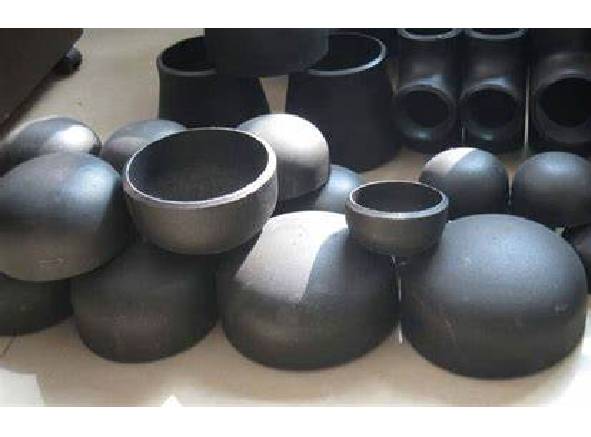-
Cangzhou Yulong Steel Co., Ltd.
-
Phone:
+86 13303177267 -
Email:
admin@ylsteelfittings.com
- English
- Arabic
- Italian
- Spanish
- Portuguese
- German
- kazakh
- Persian
- Greek
- French
- Russian
- Polish
- Thai
- Indonesian
- Vietnamese
- Zulu
- Korean
- Uzbek
- Hindi
- Serbian
- Malay
- Ukrainian
- Gujarati
- Haitian Creole
- hausa
- hawaiian
- Hebrew
- Miao
- Hungarian
- Icelandic
- igbo
- irish
- Japanese
- Javanese
- Kannada
- Khmer
- Rwandese
- Afrikaans
- Albanian
- Amharic
- Armenian
- Azerbaijani
- Basque
- Belarusian
- Bengali
- Bosnian
- Bulgarian
- Catalan
- Cebuano
- China
- China (Taiwan)
- Corsican
- Croatian
- Czech
- Danish
- Esperanto
- Estonian
- Finnish
- Frisian
- Galician
- Georgian
- Kurdish
- Kyrgyz
- Lao
- Latin
- Latvian
- Lithuanian
- Luxembourgish
- Macedonian
- Malgashi
- Malayalam
- Maltese
- Maori
- Marathi
- Mongolian
- Myanmar
- Nepali
- Norwegian
- Norwegian
- Occitan
- Pashto
- Dutch
- Punjabi
- Romanian
- Samoan
- Scottish Gaelic
- Sesotho
- Shona
- Sindhi
- Sinhala
- Slovak
- Slovenian
- Somali
- Sundanese
- Swahili
- Swedish
- Tagalog
- Tajik
- Tamil
- Tatar
- Telugu
- Turkish
- Turkmen
- Urdu
- Uighur
- Welsh
- Bantu
- Yiddish
- Yoruba

Dec . 03, 2024 18:34 Back to list
weld on threaded pipe fittings
Weld-On Threaded Pipe Fittings An Overview
In modern plumbing and construction, the use of threaded pipe fittings is ubiquitous. Among the various types of fittings available, weld-on threaded pipe fittings are particularly notable for their unique blend of strength, versatility, and ease of installation. Understanding these fittings can greatly enhance the efficiency and durability of any plumbing system.
What are Weld-On Threaded Pipe Fittings?
Weld-on threaded pipe fittings are designed to combine the benefits of welding with the convenience of threading. These fittings typically consist of two components the actual fitting, which is designed to be welded onto a pipe, and the threaded portion, which allows for easy connection to another fitting or pipe. This hybrid approach offers the strength of welded joints while maintaining the flexibility afforded by threaded connections.
The technical process often involves first welding the fitting onto a pipe, creating a robust and permanent seal. After that, the external threads of the fitting can be used to screw in other plumbing components. This method not only enhances the structural integrity of the connection but also provides a point where disassembly can occur, making repairs or modifications more manageable.
Types and Applications
Weld-on threaded pipe fittings are available in a variety of shapes and sizes, including elbows, tees, reducers, and caps. The materials used for these fittings typically range from stainless steel and carbon steel to PVC, depending on the application requirements.
1. Stainless Steel Fittings These are commonly used in corrosive environments, such as chemical plants or food processing facilities, due to their resistance to rust and degradation. 2. Carbon Steel Fittings Often employed in oil and gas pipelines, these fittings are designed for high-pressure applications where durability is critical.
3. PVC and Other Plastics These are used primarily in residential plumbing systems, especially for water supply lines and drainage systems, due to their lightweight nature and cost-effectiveness.
weld on threaded pipe fittings

Advantages of Weld-On Threaded Pipe Fittings
One of the primary advantages of using weld-on threaded pipe fittings is their strength and leak resistance. The welding process creates a hermetic seal that minimizes the risk of leaks, which can lead to costly repairs and water damage. Moreover, since the welding effectively holds the fitting in place, it adds a layer of security, especially in high-pressure applications.
Another significant benefit is the ease of installation. Weld-on fittings allow for a tailored approach to plumbing. Since each joint can be welded in place before any threaded connections are made, it allows for greater flexibility in design and layout. This is particularly advantageous in complex installations, such as industrial settings where layout can be intricate.
Additionally, the combination of welding and threading can significantly reduce assembly time. While traditional fittings may require multiple tools and techniques, weld-on threaded fittings can streamline the process, leading to cost savings both in labor and materials.
Challenges and Considerations
While there are numerous benefits to weld-on threaded pipe fittings, they are not without challenges. Proper training and experience are required to ensure that the welding process is performed correctly. Poor welding techniques can lead to structural failures or leaks, undermining the integrity of the entire system.
Moreover, while threaded connections allow for disassembly, frequent connection and disconnection may lead to wear on the threads, particularly in high-use situations. Therefore, it’s essential to use quality fittings and ensure regular maintenance.
Conclusion
Weld-on threaded pipe fittings serve as a critical component in modern plumbing and construction. Their combination of strength, versatility, and ease of installation makes them an attractive option for a wide range of applications. By understanding the advantages and potential pitfalls of these fittings, engineers and contractors can make informed decisions that enhance the safety, reliability, and longevity of their plumbing systems. As industries continue to evolve, the role of these fittings will undoubtedly remain vital in achieving robust and efficient fluid transport solutions.
Latest news
-
ANSI 150P SS304 SO FLANGE
NewsFeb.14,2025
-
ASTM A333GR6 STEEL PIPE
NewsJan.20,2025
-
ANSI B16.5 WELDING NECK FLANGE
NewsJan.15,2026
-
ANSI B16.5 SLIP-ON FLANGE
NewsApr.19,2024
-
SABS 1123 FLANGE
NewsJan.15,2025
-
DIN86044 PLATE FLANGE
NewsApr.19,2024
-
DIN2527 BLIND FLANGE
NewsApr.12,2024
-
JIS B2311 Butt-Welding Fittings LR/SR 45°/90° /180°Seamless/Weld
NewsApr.23,2024











